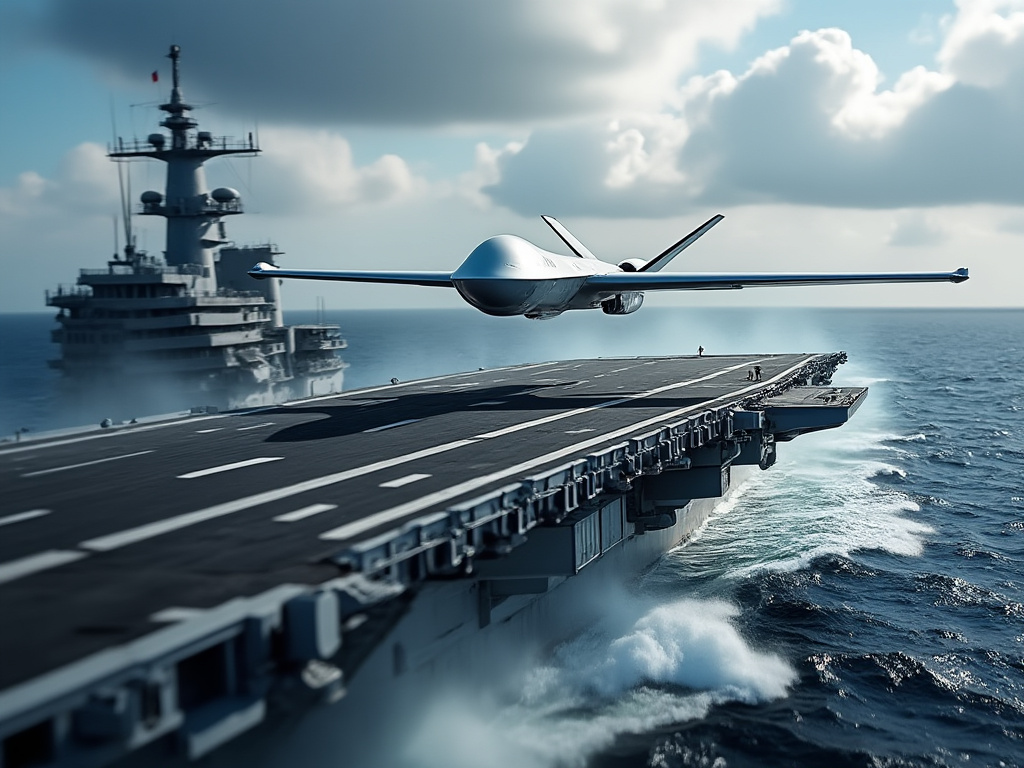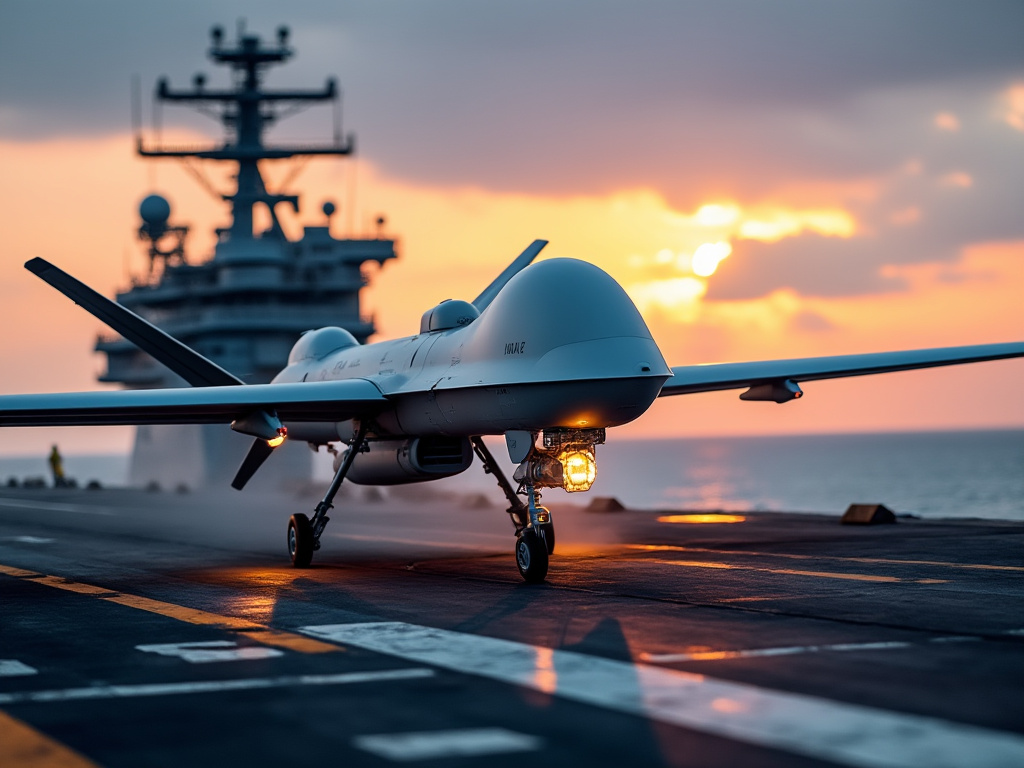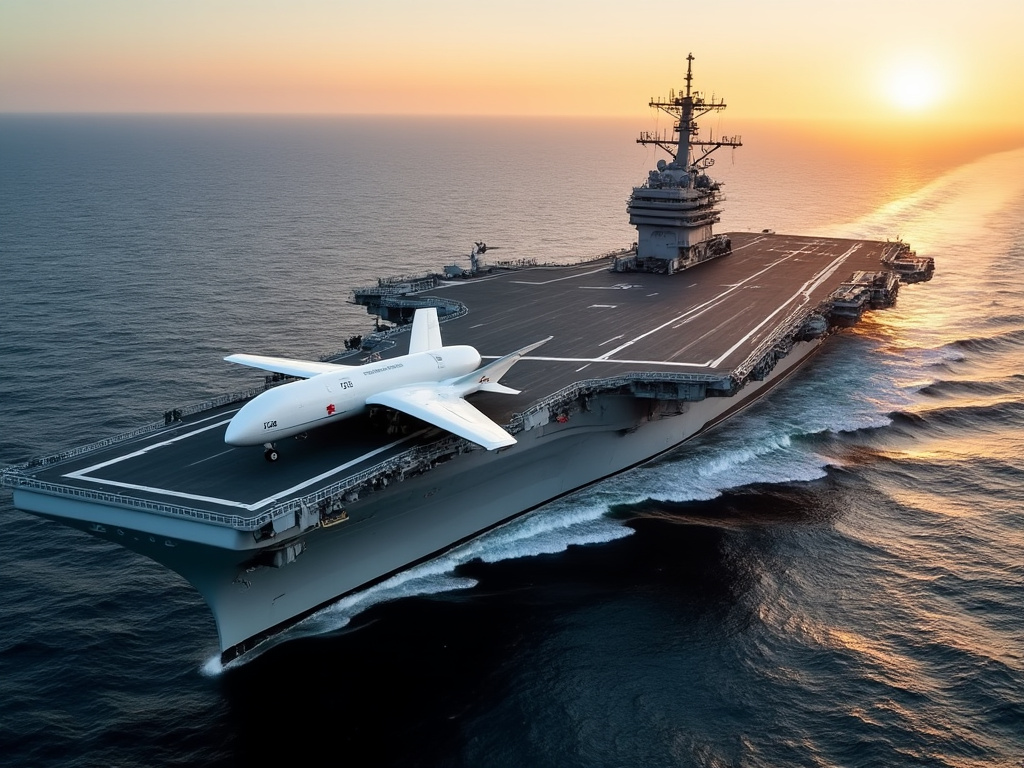
Introduction
The United States Navy is preparing to make history with the first launch of an unmanned aircraft from the deck of an aircraft carrier. This ambitious move represents a significant leap forward in naval technology and strategy, potentially reshaping how carrier strike groups operate in the future. The integration of unmanned aircraft into carrier operations offers numerous tactical advantages, including enhanced surveillance capabilities, reduced human risk, and the ability to operate in contested environments. This milestone is part of a larger trend in military innovation that aims to blend manned and unmanned systems into seamless, highly capable units.
The Navy’s upcoming test highlights an increasingly important shift toward autonomous and remotely operated technologies across the U.S. military. This step not only showcases advanced technological developments but also emphasizes the Navy’s commitment to staying ahead in an era where modern warfare depends on both information and adaptability. By attempting this launch, the Navy is positioning itself to utilize unmanned systems in ways that could redefine global naval dominance.
The Significance of This Launch
Why Unmanned Aircraft?
The interest in unmanned aircraft has surged within military organizations worldwide, and for good reasons. Unmanned systems offer benefits that manned aircraft simply cannot match. For the Navy, the decision to explore the use of unmanned aerial vehicles (UAVs) on aircraft carriers is influenced by several critical factors:
- Enhanced Safety for Personnel: Operating in combat zones or hostile environments exposes pilots to significant risk. By removing humans from the cockpit, unmanned aircraft can undertake dangerous missions, such as surveillance over high-risk areas or operations in chemically contaminated zones, without risking lives.
- Greater Operational Flexibility: Unlike manned aircraft, UAVs are not constrained by human endurance. They can remain airborne for extended periods, making them ideal for prolonged surveillance missions. This capability is invaluable for maintaining situational awareness over vast maritime regions, especially in the Indo-Pacific and Arctic regions, where surveillance is challenging and essential for national security.
- Lower Cost of Operation: Training pilots and maintaining manned aircraft is costly. UAVs reduce these expenses by minimizing the need for extensive human training and the support infrastructure required for crewed missions. By reducing operational costs, the Navy can allocate resources to other critical areas while still retaining strong aerial capabilities.
- Stealth and Precision: Many unmanned aircraft can be designed to have lower radar signatures, making them less detectable by enemy radar. With advances in AI and satellite technology, they can perform complex reconnaissance and strike missions with minimal oversight and heightened precision, allowing for agile responses in critical situations.
The Potential Benefits
Integrating unmanned aircraft on aircraft carriers brings unique advantages to the Navy’s operational capabilities. Here are some key benefits:
- Enhanced Intelligence, Surveillance, and Reconnaissance (ISR): UAVs on aircraft carriers can conduct long-range ISR operations, helping to detect threats, track enemy movements, and provide intelligence in real time. This function is especially critical in contested regions where the Navy must maintain situational awareness without endangering crew members.
- High-Altitude Surveillance: Unmanned aircraft are capable of flying at higher altitudes than traditional manned aircraft. This vantage point provides broader coverage and allows for real-time monitoring of wide areas, providing valuable insights for both immediate tactical use and long-term strategic planning.
- Effective Strike Capability with Minimal Risk: Unmanned systems can serve as cost-effective strike platforms, delivering precision-guided munitions without risking human life. In the event of an attack, these drones could potentially strike adversaries with precision, furthering the Navy’s strategic goals with reduced collateral damage.

Technical Challenges and Innovations
Developing Carrier-Compatible Drones
Adapting UAVs for carrier operations presents unique technical challenges. Unlike land-based drones, UAVs operating from aircraft carriers must contend with limited deck space, high wind conditions, and the complex process of landing on a moving platform. Several key technologies have been developed to address these obstacles:
- Catapult Launch System: Launching a drone from an aircraft carrier requires a specialized catapult system that propels the UAV to flight speed in seconds. Engineers have had to fine-tune this system to ensure it is compatible with the weight, speed, and dimensions of UAVs, which differ significantly from traditional manned aircraft.
- Arresting Gear for Drone Recovery: Landing an unmanned aircraft on a carrier is particularly challenging. UAVs must engage with a hook-based system, known as arresting gear, to stop upon landing. This system requires precise synchronization between the UAV and the carrier’s flight deck, a feat achieved through advanced sensors and control software that allow the UAV to accurately gauge its approach.
- Advanced Stabilization Systems: Carriers operate in rough seas, which can create challenging takeoff and landing conditions. UAVs are equipped with gyroscopic stabilizers and adaptive flight controls to maintain stability during launch and recovery, even in rough weather. Additionally, sensors onboard can adjust to changing wind and wave conditions, making real-time adjustments for safe operation.
Enhanced Control and Communication
A critical aspect of operating unmanned systems on aircraft carriers is ensuring a secure and reliable communication link. Without a pilot onboard, UAVs depend entirely on remote operators, who need a constant data feed to control and adjust the UAV’s actions. This presents unique challenges and opportunities:
- Redundant Communication Systems: To reduce the risk of signal disruption, UAVs designed for carrier operations are equipped with redundant communication systems, including satellite uplinks, radio frequency communication, and, in some cases, line-of-sight laser communication. These redundancies are essential in hostile environments where enemy forces may attempt to jam or intercept communication.
- AI-Assisted Control: In scenarios where communication with the UAV is compromised, onboard AI systems allow the drone to continue its mission autonomously. These systems enable the UAV to execute pre-programmed flight paths, respond to environmental changes, and avoid collisions without human intervention, enhancing mission success in unpredictable conditions.
- Cybersecurity Measures: Operating in a contested region increases the risk of cyberattacks. The Navy has developed robust cybersecurity protocols to protect the data link and prevent adversaries from compromising control. By employing encrypted communications, UAVs are safeguarded against unauthorized access and malicious interference.
Strategic Implications
A New Era in Naval Warfare
The introduction of UAVs to aircraft carrier strike groups could usher in a new era of naval warfare. As the Navy becomes increasingly reliant on these systems, it is poised to conduct missions that were previously deemed too risky or complex for manned aircraft alone. This change signals the emergence of a hybrid fleet, where manned and unmanned assets work in tandem to project power and maintain security in contested regions.
- Increased Operational Reach: The integration of UAVs extends the reach of a carrier strike group, allowing it to gather intelligence or launch precision strikes hundreds of miles from its physical location. This enhanced reach is particularly valuable in large maritime areas like the Pacific, where range and response time are critical for effective deterrence.
- Force Multiplication: The Navy can deploy fewer manned aircraft while maintaining or even increasing its operational effectiveness. By acting as a force multiplier, UAVs free up resources, allowing the Navy to allocate personnel and equipment to other strategic areas without compromising overall strength.
- Improved Decision-Making Through Real-Time Data: With more data coming in from UAVs, commanders have a clearer picture of the battlefield. This real-time intelligence empowers decision-makers to act swiftly, accurately, and with greater confidence, leading to more successful outcomes in high-stakes missions.
Strengthening Defense Capabilities
Unmanned aircraft on carriers offer expanded defense capabilities that go beyond traditional strike operations. They enhance fleet protection by conducting early-warning patrols and rapid-response missions against potential threats. The ability to detect, identify, and, if necessary, neutralize threats before they come within range of the carrier group significantly bolsters the Navy’s defensive stance.
- Anti-Submarine Warfare (ASW): UAVs equipped with sonar or anti-submarine weapons could play a pivotal role in ASW missions, detecting and tracking submarines that threaten the carrier group. Their presence in ASW scenarios would allow for continuous monitoring without the fatigue limitations experienced by manned aircraft crews.
- Electronic Warfare (EW): UAVs can carry EW systems to disrupt enemy communications, radar, and even GPS signals. This capability helps to create confusion and disrupt enemy operations, providing a tactical advantage in both offensive and defensive engagements.

Conclusion
The Navy’s first attempt to launch an unmanned aircraft from an aircraft carrier is not just a test—it is a pioneering event that marks the beginning of a new era in naval aviation. As technology continues to advance, the successful integration of unmanned systems on carriers will likely redefine naval operations, offering enhanced capabilities for defense, intelligence, and strategic deterrence.
By expanding the Navy’s operational reach and reducing risk, these unmanned systems will play a central role in maintaining global security and defense. As this historic test unfolds, it will undoubtedly shape the future of naval power, establishing a model for other nations and highlighting the transformative potential of unmanned aircraft in modern military strategy.
Stay Updated
For more updates on this groundbreaking test and other advancements in military technology, follow the latest news from the U.S. Navy.
